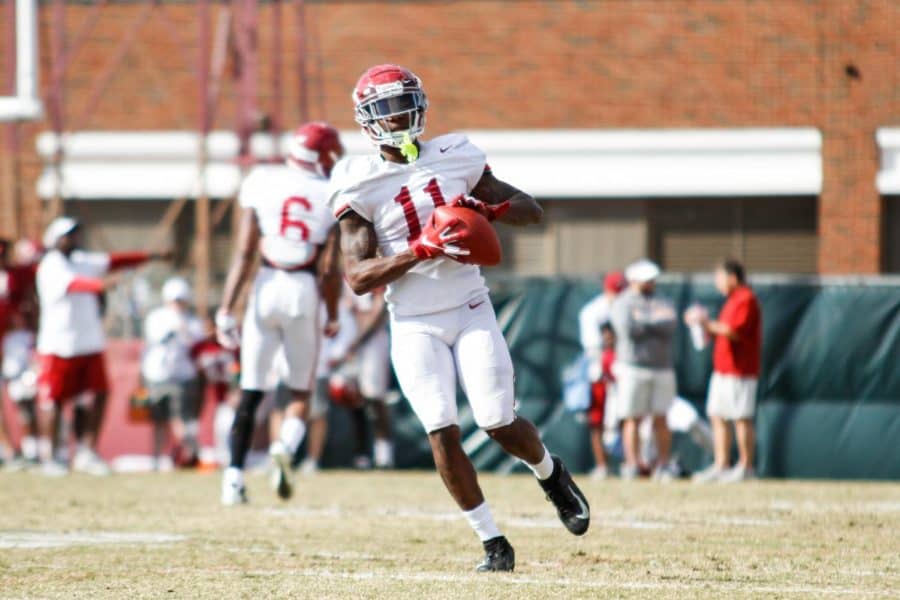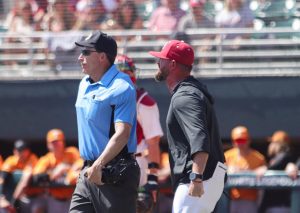Fast and furious, Ruggs more than just speedy
April 11, 2019
Trevon Diggs didn’t even need to hear the rest of the question. As soon as the senior cornerback heard wide receiver Henry Ruggs’ name, he broke into a grin.
“All of the receivers are good, all of them run good routes and all of them are fast. But Henry, he’s super fast,” Diggs said. “If you don’t touch him and you don’t get hands on him, he’s going to run right by you, so I have to make sure I put hands on him. I have to make sure I touch him at the line a little bit. But if you give him a free release and he’s running deep, it’s hard to catch him.”
Before he was even a starter at Alabama, Ruggs gained notoriety for going five-for-five to start his collegiate career. His first five catches at Alabama went for 112 yards and five touchdowns. He finished 2017, his true freshman season, as the team’s leader in touchdown catches, hauling in more than eventual first-round draft pick Calvin Ridley and recruiting class of 2017 counterparts DeVonta Smith and Jerry Jeudy.
But after Smith caught the momentous championship-winning pass from Tua Tagovailoa, and as the comparisons likening Jeudy to Ridley became more prevalent, Ruggs seemed to fall into the shadows throughout last offseason.
As Jeudy’s 14 touchdowns in 2018 helped earn him the Biletnikoff Award, given annually to college football’s top wide receiver, Ruggs was nipping at his heels with 11 – on 22 fewer catches.
He has been hailed as the fastest player in college football’s finest receiving corps, having reportedly run the 40-yard dash in 4.25 seconds at Alabama’s junior pro day last month. That’s just three-hundredths of a second above the NFL Combine record, which Ruggs thinks he may have a chance at breaking next spring should he leave school early.
“I actually was kind of upset after I ran because I didn’t feel like I had a good start,” Ruggs said. “But after they told me the numbers, I was like, ‘I still feel like I can do better.’”
The quest to improve doesn’t stop at increasing his already incendiary speed. In fact, he’s trying to flash it a little bit less.
New receivers coach Holmon Wiggins has been teaching Ruggs how to use more nuance in his route-running, varying his speed to create separation from defenders instead of going full-speed on every play. Of course, a receiver doesn’t become a top-100 overall recruit or start at Alabama as a true sophomore on speed alone.
Smith was asked on Tuesday about an underrated attribute of Ruggs’ game that makes him a great receiver. His reply: Ruggs’ physicality.
“No matter if he’s blocking, running his routes, he’s physical,” Smith said.
Teammates and opposing defensive backs alike know that letting Ruggs off the line of scrimmage untouched is like playing with fire. If he gets by his man, it’s all over.
“You can’t get too close up on him, or he’s going to beat you deep,” junior Xavier McKinney said. “So, seeing those guys on the opposite side, it’s kind of a nightmare. But guys like Ruggs definitely make you better.”





















